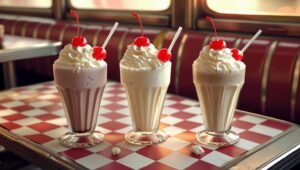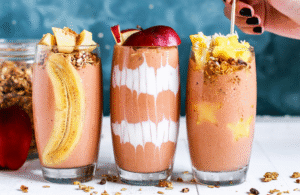Contents
ToggleHow Sugar Turns Into Fluffy Magic
Candy floss is a fairground favourite, a cloud of sugary delight that melts in your mouth in an instant. But have you ever stopped to wonder how plain old sugar transforms into those delicate, wispy strands? The process is a perfect mix of heat, physics, and a little bit of fairground magic!
In this post, we’ll break down the science behind candy floss, from how sugar melts to the fascinating way it turns into fluffy threads.
What Is Candy Floss Made Of?
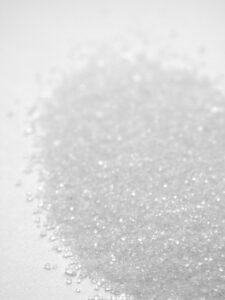 At its core, candy floss is almost 100% sugar. Some variations include food colouring and flavouring, but the main ingredient remains granulated sugar—the same kind you put in your tea!
At its core, candy floss is almost 100% sugar. Some variations include food colouring and flavouring, but the main ingredient remains granulated sugar—the same kind you put in your tea!
Sugar is made up of sucrose, a simple carbohydrate that melts when heated and re-solidifies into ultra-thin strands when cooled. This transformation is what makes candy floss so unique!
Step 1: The Magic Begins – Heating the Sugar
 The first step in making candy floss is heating the sugar inside the machine’s spinning drum. This is where the science gets exciting!
The first step in making candy floss is heating the sugar inside the machine’s spinning drum. This is where the science gets exciting!
- At around 160°C (320°F), sugar undergoes a phase change from solid to liquid.
- The heat breaks down the crystalline structure of sugar, turning it into a molten syrup.
- As the temperature rises further, sugar starts to caramelise, which is why overcooked candy floss can develop a slightly golden tint.
Step 2: Spinning Into Thin Air – The Role of Centrifugal Force
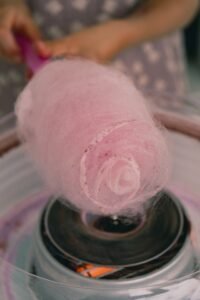
Once the sugar is fully melted, the machine starts to spin rapidly—and this is where physics takes over!
- The spinning drum forces the liquid sugar through tiny holes using centrifugal force.
- As the sugar leaves the heated centre, it is exposed to cooler air, causing it to solidify instantly.
Step 3: Why Does Candy Floss Feel So Light?
 Despite being made entirely of sugar, candy floss feels incredibly light. This is because:
Despite being made entirely of sugar, candy floss feels incredibly light. This is because:
- The sugar strands are so thin that they are mostly air—candy floss is about 90% air and only 10% sugar!
- The structure is non-crystalline, meaning the sugar doesn’t form its usual solid, crunchy texture but instead remains light and delicate.
This is why a huge cloud of candy floss melts instantly in your mouth—as soon as it touches moisture, the fine sugar strands dissolve back into their original form.
The Role of Humidity – The Enemy of Candy Floss
Ever noticed that candy floss doesn’t last long? That’s because sugar is highly hygroscopic—meaning it absorbs moisture from the air.
- In humid conditions, the delicate strands quickly absorb water, causing them to collapse into sticky clumps.
- This is why fresh candy floss is best enjoyed immediately—or stored in airtight packaging to prevent it from turning into a syrupy mess!
Can You Make Candy Floss Without a Machine?
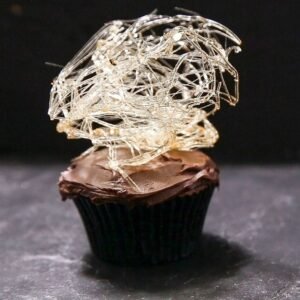 While traditional candy floss machines use heat and centrifugal force, you can technically make sugar threads using a stovetop method:
While traditional candy floss machines use heat and centrifugal force, you can technically make sugar threads using a stovetop method:
- Heat sugar until it melts into a thick syrup.
- Use a fork or whisk to flick strands of hot sugar onto a cold surface.
- The sugar cools instantly, forming thin strands similar to candy floss—although much crunchier!
This method is often used to create sugar decorations for fancy desserts rather than the fluffy clouds found at the fairground.
The Future of Candy Floss: More Than Just Sugar?
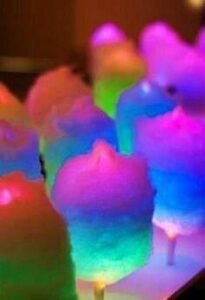 With advancements in food science, candy floss is evolving beyond just sugar! Some modern variations include:
With advancements in food science, candy floss is evolving beyond just sugar! Some modern variations include:
- Flavoured Candy Floss – Infused with everything from fruit to salted caramel.
- Sugar-Free Candy Floss – Using alternative sweeteners like isomalt or xylitol.
- Glow-in-the-Dark Candy Floss – Made with quinine (from tonic water) for a fun, UV-reactive effect!
Conclusion: The Sweet Science of Candy Floss
The next time you enjoy a fluffy pink cloud of candy floss, remember—you’re not just eating sugar; you’re experiencing a scientific marvel!
From the melting of sugar crystals to the instant cooling and crystallisation into thin strands, candy floss is a perfect combination of chemistry, physics, and fun.
Now that you know the science behind it, why not try making your own? Whether you use a machine or experiment with spun sugar techniques, one thing is for sure—candy floss will always be a fairground favourite!



